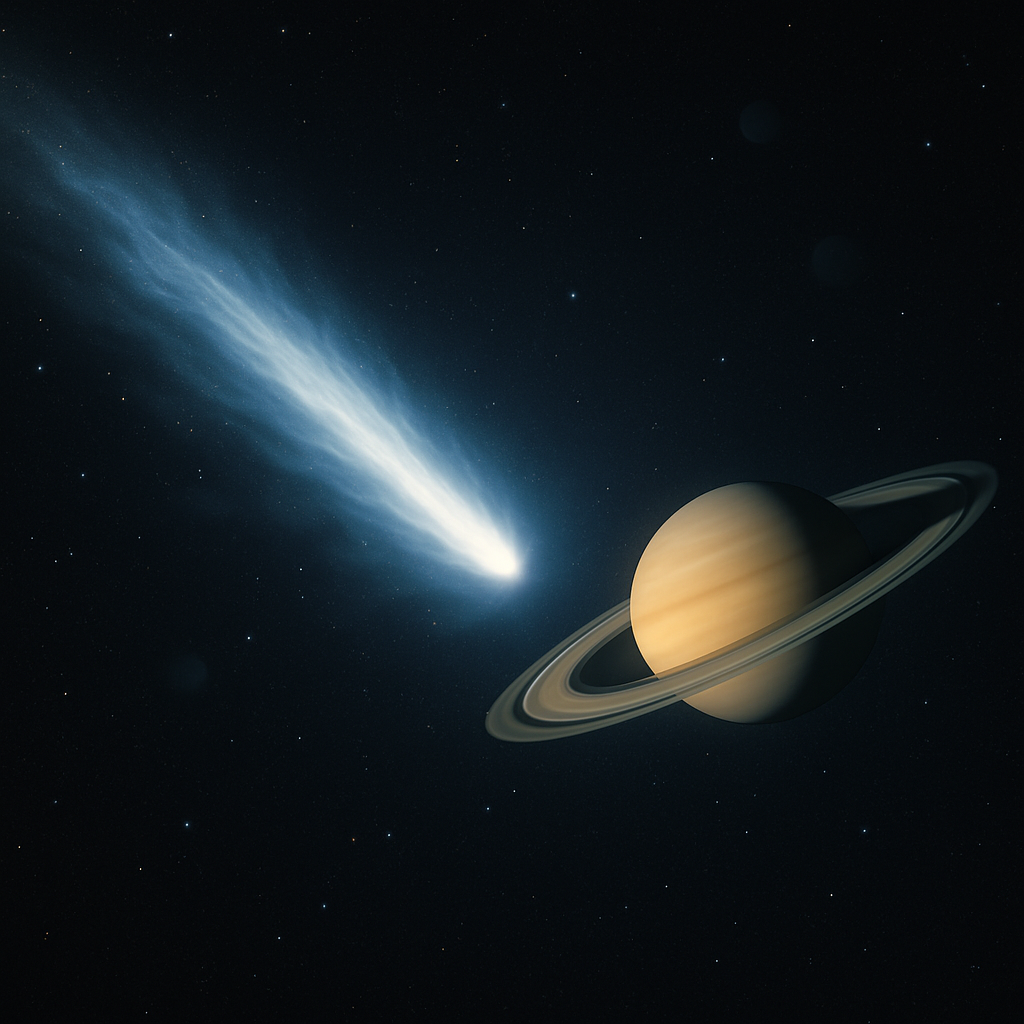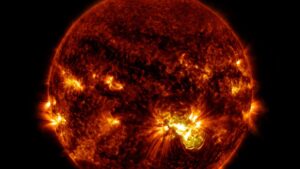A newly confirmed interstellar comet, officially known as 3I/ATLAS, continues its journey through our solar system at over 130,000 mph. Observations began in early July, confirming its status as only the third known interstellar object alongside ‘Oumuamua and 2I/Borisov. (Live Science; NASA)
The comet is currently passing near Jupiter’s orbit and will reach its closest point to the Sun in late October, before returning near Earth in December. Scientists confirm it poses no threat to our planet. (Reuters; NASA)
Origins and Trajectory
3I/ATLAS originated in the Milky Way’s thick disk and likely entered our solar system around mid‑2023. Its orbit is retrograde with high eccentricity, nearly double that of 2I/Borisov. Pre-discovery images dating back to June 14 confirmed its path and velocity. (Live Science; NASA)
The object is estimated up to 15 miles across, making it significantly larger than previous visitors. Amateur astronomers captured key observations alongside professional telescopes worldwide. (Live Science)
Scientific Significance
Studying 3I/ATLAS helps scientists examine material from beyond our solar system. Analysis of its tail, dust, and gas composition may reveal insights into planet formation around other stars. (NASA)
Its unusual size and trajectory allow testing theories of interstellar origin and solar system interaction. Observatories will continue to monitor its activity through December. (Live Science)
Expert Debate and Speculation
A speculative study suggested 3I/ATLAS could be an alien spacecraft or probe, citing its trajectory and speed. Most astronomers dismiss this claim as unsupported and emphasize its classification as natural. (New York Post)
Critics argue the idea distracts from legitimate research and note that peer-reviewed evidence supports a cometary origin with standard composition. (New York Post)
What Comes Next
Astronomers hope to collect more data during the comet’s solar and Earth flybys. Instruments like the Vera C. Rubin Observatory may enable better tracking and analysis. (Live Science)
Observing 3I/ATLAS offers a rare chance to study interstellar material and compare it to native solar system bodies. It may deepen understanding of cosmic composition and dynamics. (NASA)
Sources: Live Science (3I/ATLAS overview), NASA (official discovery), New York Post (speculative alien theory)




